Tis’ the season for mistletoe hanging in doorways to add romantic cheer. True mistletoe may spread cheer but another mistletoe–dwarf mistletoe–doesn’t spread cheer throughout the year.
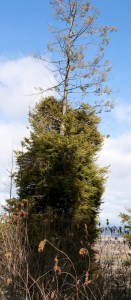
Dwarf mistletoe causes conifers to produce an abnormal proliferation of branches along the trunk called “witches’ broom”
Dwarf mistletoe is anything but romantic for conifer trees because once infected a conifer most likely will die prematurely.
For many people, dwarf mistletoe is most often recognized by the “witches’ brooms” it creates on conifers. The large mass of small twigs and branches is an abnormal proliferation varying from tight clumps to large loose fans depending on the species.
More than eight species of dwarf mistletoe inhabit Inland Northwest forests and each species targets one or two species of conifers (which are considered hosts). Host trees include ponderosa pine, lodgepole pine, western larch, Douglas-fir, western hemlock and mountain hemlock. In other regions, limber pine and pinyon pine are also host trees.
Conifers are host trees because dwarf mistletoe is a parasitic plant, meaning it derives all of the nutrients and water it needs from the conifer.
Dwarf mistletoe begins as a seed that is dispersed in late summer or early fall. For germination, a seed has to land on the bark or needle of the desired conifer. To aid in this endeavor, dwarf mistletoe seeds are sticky and adhere to anything they touch.
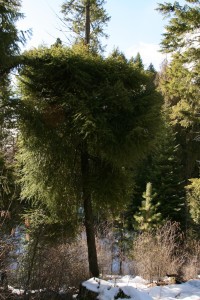
Witches’ brooms greatly increase wildfire risk because the dead branches and dead needles on the lower trunk provide a fuel ladder upwards
If the seed lands on a suitable host, it germinates the following spring and penetrates the bark.
Even though dwarf mistletoe is a plant it doesn’t have a true root system. Instead it has the equivalent of a root system called an endophytic system with specialized structures called “sinkers” that develop within the wood.
Dwarf mistletoe is a slow growing plant. Once infected, the presence of dwarf mistletoe isn’t visible until two years later when a swelling appears at the site of infection. The swelling is in response to the sinkers distorting the annual rings and cambial tissues of the wood.
After another two years, shoots appear on the outside of the bark. The small leafless shoots vary from yellow to orange to green and brown. The shoots remain short from a few inches to several inches, depending on the species of dwarf mistletoe.
After two more years the fruits mature. Male plants have small inconspicuous flowers that produce pollen and female plants produce flowers and then seeds.
Unlike pollen which depends on wind for dispersement, the seeds are explosively discharged from the plant–some topping speeds of 60 miles per hour! The seeds usually land within 50 feet of the parent plant.
As dwarf mistletoe progresses through its life cycle, it garners more nutrients and water from its host through more extensive sinkers. With fewer nutrients to grow, the host tree begins to thin and turn yellowish and eventually the tree begins to die from the top down.
In response to older dwarf mistletoe infections, trees produce witches’ brooms along the trunk of the tree. The witches’ brooms are a result of the dwarf mistletoe not the mistletoe itself. Trees with multiple infections may have several witches’ brooms along the trunk.
Infected trees can die as a direct result of dwarf mistletoe or they can succumb to other problems, like bark beetles, in their weakened state. Once infected throughout the tree, mortality typically occurs in 10 to 15 years.
Dwarf mistletoe doesn’t spread much cheer among foresters because it reduces tree growth, seed production ability, wood quality and the life span of infected trees. On the cheerful side though, dwarf mistletoe provides food, shelter and nesting sites for many animals and birds of the forest.

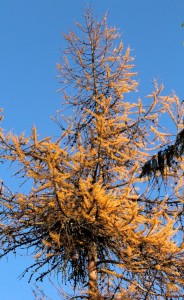
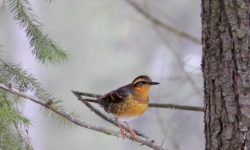
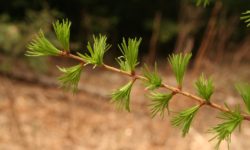
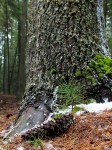
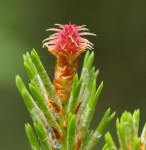
Does dwarf mistletoe appear in northernmost Idaho, and does it produce a berry for bluebirds to feed upon? Thankyou.
Yes, dwarf mistletoe appears in Boundary County.